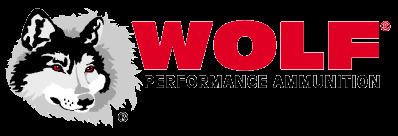Website [1] | ||
 | ||
Headquarters Placentia, California, United States | ||
WOLF Performance Ammunition is a trademark associated with Sporting Supplies International (SSI), a corporation in the United States. The ammunition is mostly manufactured by Tulskiy Patronniy Zavod (Tula Cartridge Plant) in Tula, Tula District, Russia. Some .22-caliber rimfire ammunition is made by SK Jagd und Sportmunitions Gmbh (SK Hunting- and Sporting-Ammunition) of Schönebeck, Salzlandkreis, Saxony-Anhalt, Germany.
Contents
Products
WOLF Performance Ammunition has several product lines which include:
Unlike some suppliers of such bargain-price ammo, WOLF uses newly manufactured rounds with non-corrosive Berdan- and Boxer-type primers. Russia is the world's largest source of 7.62×39mm ammunition, which is used by the Russian AK-47 and SKS family of rifles, as well as the Ruger Mini-30.
Current events
The Tula Cartridge Plant and Ulyanovsk Machinery Plant no longer manufacture cartridges for Wolf.
In 2005/2006, there was a shortage of 7.62×39mm ammunition in the United States. This had the effect of causing prices to almost double in some cases and WOLF's ammo to nearly disappear from the U.S. market in late 2006–early 2007. The ammunition shortage was due to Russian production lines struggling to fill a massive order placed by Venezuela, who had just adopted the AK-103 series of rifles, and by the United States to supply the fledgling Afghan Army. Even so, Wolf's 7.62×39mm is available in standard full-metal-jacket configuration, as well as hollow-point and soft-point bullet loads suitable for hunting.
In 2007/2008, supplies of Wolf steel-cased .308 ammunition became increasingly rare, and major distributors were completely sold out. This, along with diminishing supplies of military surplus 7.62×51mm NATO, had driven .308 Winchester prices to an all-time high. This shortage is exacerbated by the strain of filling the Afghan Army order. As Wolf catches up with demand, new supplies will become available in the United States. When these new supplies hit the market, it is unknown how much the prices will have increased.
In 2010/2011, Wolf discontinued the use of the red sealant used around the primer and case neck intended to keep moisture out and prolong shelf life. They received too many complaints from end users of a buildup from the red sealant on their firearms; thus, all new ammo produced from both plants will no longer have any red sealant.
Lacquer coating
Wolf no longer manufactures ammunition with a lacquer coating on the cartridge casing due to issues concerning lacquer-coated steel cartridges becoming stuck in the chamber of a firearm after firing, with difficulty in ejecting the spent cartridge afterwards. This appears to be more of a problem with cartridges with narrowly tapering walls (e.g. .223 Remington) than those with rather steep case walls such as 7.62×39mm cartridges or pistol ammunition. This also does not seem to pose much of a problem for Soviet- or East Bloc-designed weapons that tend to have looser chamber clearances than Western-designed weapons.
Tests have shown that steel-cased Wolf cases do not obturate sufficiently to form a good gas seal against the chamber when compared to brass-cased ammunition. As a result, when Wolf cartridges are fired, some of the combustion by-products are deposited between the case and the chamber, causing a buildup of carbon that is well in excess of normal. Firing a brass case (that does expand fully) after using Wolf ammunition without cleaning the gun first can result in the brass case being "glued" into the chamber by the carbon buildup. This issue has nothing to do with the lacquer coating vaporising or melting, as has mistakenly been suggested. The problem is one of carbon deposition, which creates the same end result (i.e.; a stuck cartridge that has jammed in the chamber). It is important to emphasise that Wolf ammunition is perfectly safe to use because it conforms to all SAAMI standards. However, it is recommended that firearms be thoroughly cleaned after using Wolf ammunition due to the increased rate of carbon buildup within the chamber. As mentioned in the previous paragraph, the looser chamber dimensions of Soviet-designed weapons allow for more room during firing and extraction. Soviet or East Bloc weapons do not experience these problems.
Note: all ammunition currently manufactured by Wolf has polymer-coated or brass cartridge cases, and any obturation problems have been radically reduced.
Steel-jacketed bullets
In addition to using a steel casing, certain types of Wolf rifle cartridges use steel-jacketed bullets, which are often copper-plated and cosmetically similar to standard copper-jacketed bullets. The copper exterior of the bullet is approximately .005 inch thick, with an underlying steel jacket of about 1/32 inch thick. This type of ammunition is labeled "bimetal".
Indoor shooting ranges, which often use backstops constructed of steel, have accordingly widely prohibited steel-jacketed and bimetal ammunition to prevent shooters from damaging their backstops (as well as steel-to-steel contact from the round causing sparks, which could ignite unburnt powder residue in the air).
